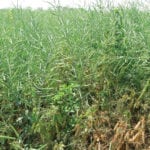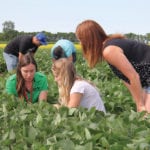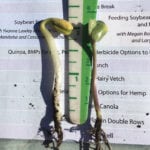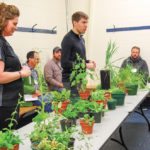
Tag Archives Agronomy

Made-in-Canada sustainability approach gains support
The ALL initiative is endorsed at the G20 ag ministers' meeting for putting research into fields

AAFC funds Crop Agronomy Cluster
The cluster consists of eight research activities ranging from soil health to herbicide resistance and climate change adaptation

To spray or not to spray for fungal disease
You don’t have to just pencil it in and spray anyway — there are tools to help make the decision

Intercropping coming closer
Research centres are building on their knowledge base through the trial-and-error approach

Putting class theory into soybean field practice
The University of Manitoba has introduced a new hands-on field course designed to introduce research principles to help second-year diploma students apply learning from their first year of study

How deep is too deep when chasing moisture for soybeans?
A University of Manitoba researcher thinks there should be more attention paid to soybean seeding depth

Warming seed potatoes had outsized effect on crop
Pre-seed storage may have more impact on processing crop than how the seed crop was managed in the field

Soybeans raise tillage issues
As the low-residue crop creeps into new areas, new techniques are needed

CanoLAB adds soybeans to the agenda
The two-day event hoped to get a better idea on managing canola and soybeans for growers who increasingly want to grow both

Tight crop rotations in the hot seat
Rotations were a major point as discussions turned to blackleg during this year’s BASF Knowledge Harvest


